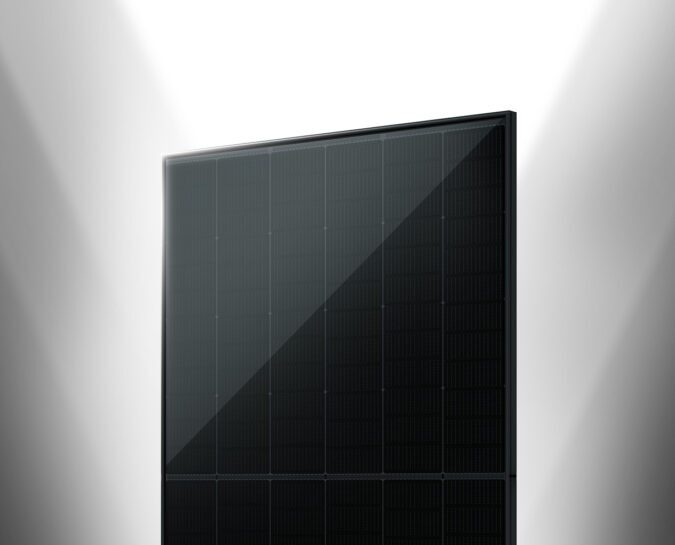Researchers have developed a model to quantify the benefits of vehicle-integrated photovoltaic (VIPV) solutions on three different sizes of electric vehicles (EVs) in the city of Graz, Austria, particularly the effect on battery energy and vehicle mileage.
The model revealed several key factors that affect energy harvesting and yield for EV traffic, including insight into weight ranges, surface areas to cover with PV, what type of PV, and energy consumption.
“Our study presents a simulation model that allows for adjustments to various parameters, including time, date, driving and parking cycles, and vehicle type. This model enables comparisons of solar energy production across different seasons and usage patterns,” Judy Jalkh, corresponding author told pv magazine, adding that it calculated solar PV contributions from vehicle zones, such as the roof, hood, trunk, and doors.
“Additionally, it helps identify the key factors in vehicle design that influence the success of VIPV integration.”
The study used a solar irradiance calculator implemented in Python using the PVLIB-Python modeling tool produced by the US Department of Energy's Sandia National Laboratory, which included shade simulations. The results were fed into a second model of a vehicle equipped with PV, which was made with Matlab/Simulink and included powertrain modeling.
The three types of electric vehicles analyzed were a Volkswagen ID.Buzz, a Volkswagen ID.3 and a Fiat 500e. Two types of PV cell technologies were included in the calculations, one with 12% efficiency and the other with 20%.
A third pillar of the research was an outdoor vehicle measurement campaign that provided real-world driving data on irradiance and “complex shading” scenarios. A demonstrator vehicle was equipped with a variety of measurement devices, including several pyranometers and thermocouples.
The simulations showed contributions by car surface zone. “Using high-efficiency PV modules on the roof can supply over 20% of monthly mileage from March to September,” said the researchers. “The hood can also be a good option depending on its size. On the other hand, the doors are most advantageous for added energy in the winter months.”
The simulations showed that even in winter and even if the vehicle experiences 30% shadowed parking conditions, their VIPV setup could still enable 12% to 20% more mileage before recharging. The team considered transferring the additional range benefit to the powertrain to “open the possibility of reducing the battery size by 12% to 20%”, a move that could defray the costs of PV integration, noting it was a topic for future research, requiring “a comprehensive cost analysis” of additional PV zones.
“With energy storage and sustainability being critical factors in EV adoption, VIPV can offer a valuable add-on to extend the range of EVs,” said Jalkh. “Beyond that, there are applications for other transportation sectors, such as heavy-duty vehicles (buses, trucks) and smaller delivery vehicles where energy efficiency is paramount.”
The work was done by a team from Virtual Vehicle Research and Crystalsol, both based in Austria. It was detailed in “Energy harvesting potential for 3 EVs equipped with PV for the area of Graz in Austria,” published by Solar Energy Materials and Solar Cells.
The team’s next area of research will focus on the influence of different driving cycles, such as long and short trips, driving break durations, and timing of vehicle charging.
“We have already conducted extensive simulations and analyses on heavy-duty trucks to assess the potential of PV integration in Germany and the UK. Additionally, we are exploring how this technology can be adapted for other types of transportation, including buses and smaller delivery vehicles. By simulating these scenarios, we aim to optimize PV systems for a wider range of applications,” explained Jalkh.
Reactions to the research presented at special interest conferences have come from several areas, Jalkh stated, “Many in the automotive sector see the potential for VIPV technology to support electric fleets, while scientists are keen to explore further optimizations in material efficiency and performance under varied environmental conditions.”
This content is protected by copyright and may not be reused. If you want to cooperate with us and would like to reuse some of our content, please contact: editors@pv-magazine.com.



By submitting this form you agree to pv magazine using your data for the purposes of publishing your comment.
Your personal data will only be disclosed or otherwise transmitted to third parties for the purposes of spam filtering or if this is necessary for technical maintenance of the website. Any other transfer to third parties will not take place unless this is justified on the basis of applicable data protection regulations or if pv magazine is legally obliged to do so.
You may revoke this consent at any time with effect for the future, in which case your personal data will be deleted immediately. Otherwise, your data will be deleted if pv magazine has processed your request or the purpose of data storage is fulfilled.
Further information on data privacy can be found in our Data Protection Policy.